A smartphone is all but a necessity in today’s digital world, and getting the phone that’s right for you is critical. Competition between phone makers is fiercer than ever, especially at the premium end of the market. Ultimately, that’s great news for consumers – but with so many mobile phones available, each differentiated by their software, feature set, and price point, there can also be a sense of uncertainty in choosing your perfect handset.
Tech Advisor’s team of editors live and breathe phones every day. We perform in-depth testing for all the top models from the likes of Samsung, Google, Apple, Motorola and OnePlus, as well as the cheaper, big-value smartphones you may not even be aware of. We know which Android phones and iPhones are best for cameras, battery life, software and other aspects.
Below you’ll find our top 10 recommendations for the best phones available today, and you can click through to the full review of each for more information. You’ll also find detailed buying advice to help you choose the right Android phone or iPhone for your needs.
Best Android and iPhone phone reviews
1. Samsung Galaxy S25 Ultra – Best Overall Phone
Pros
- Top-tier performance
- Impressive cameras
- Gorgeous anti-reflective screen
- The most advanced AI around
- Slick software experience
Cons
- Very similar to S24 Ultra
- S Pen has no Bluetooth
- Expensive
Price When Reviewed:
From $1,299.99
The S25 Ultra looks almost identical to the S24 Ultra, and from a hardware perspective, it is. But this doesn’t stop it from being the best phone you can buy right now, provided money is no object.
There are now even fewer weaknesses than before, with even more processing power, small but noticeable camera improvements and a new anti-reflective screen that puts the 6.9-inch, 120Hz OLED panel in a league of its own. The newly rounded corners make it easier to hold.
You also get the best software experience we’ve ever seen on a Samsung phone (and maybe an Android phone full stop), with an extensive suite of genuinely useful AI features and class-leading seven-year update support.
However, it’s by no means perfect. It’s a shame to see the built-in S Pen downgraded to be without Bluetooth, while such a heavy, bulky phone won’t be for everyone. It’s also still very expensive.
But if you want the best of the best when it comes to smartphones right now, the S25 Ultra is the device to get.
Who should buy the Samsung Galaxy S25 Ultra?
You want to go all-out with top specs and features not found elsewhere, like Samsung’s S-Pen stylus.
Samsung Galaxy S25 Ultra: Further Considerations
It’s expensive and might be overkill for some users.
Read our full
Samsung Galaxy S25 Ultra review
2. OnePlus 13 – Best Value Premium Phone

Pros
- Stellar performance
- Great user experience with nice AI additions
- Incredible battery life
- Super-fast charging
Cons
- Some camera niggles
- Magnetic accessories only work with case
Price When Reviewed:
From $899.99
Best Prices Today:
Buy a OnePlus 13 from Fonehouse on Vodafone with 100GB data for £47/month and £29 upfront
The OnePlus 13 takes what made the OnePlus 12 so great and makes it even better. This is the best phone OnePlus has ever made, and up there with the finest around right now.
What makes it so good? It’s a brilliant combination of top-class hardware, slick software and extensive support, meaning the phone could be your main phone for many years to come.
Highlights include the stellar Snapdragon 8 Elite performance, a gorgeous 6.82-inch OLED screen and incredible battery life with 100W charging support. Those factors alone are enough to make it worth considering.
But the OnePlus 13 is equally impressive on the software side, with Oxygen OS one of the best Android skins around and lots of useful AI features. Four years of OS updates and six years of security updates aren’t class-leading, but plenty good enough for most people.
With all that in mind, and a price tag that significantly undercuts many rivals, why wouldn’t you buy it? Unfortunately, while good enough for most people, the cameras are a clear step down from the best around, which will be a dealbreaker for many.
If you can look beyond that and the fact that a case is required for MagSafe-style magnetic charging accessories, the OnePlus 13 will serve you very well.
Who should buy the OnePlus 13?
You want a phone that’s excellent in just about every department for under a grand with change to spare.
OnePlus 13: Further Considerations
Look elsewhere for the best cameras if that’s really important.
Read our full
OnePlus 13 review
3. Xiaomi 15 Ultra – Best Camera Phone
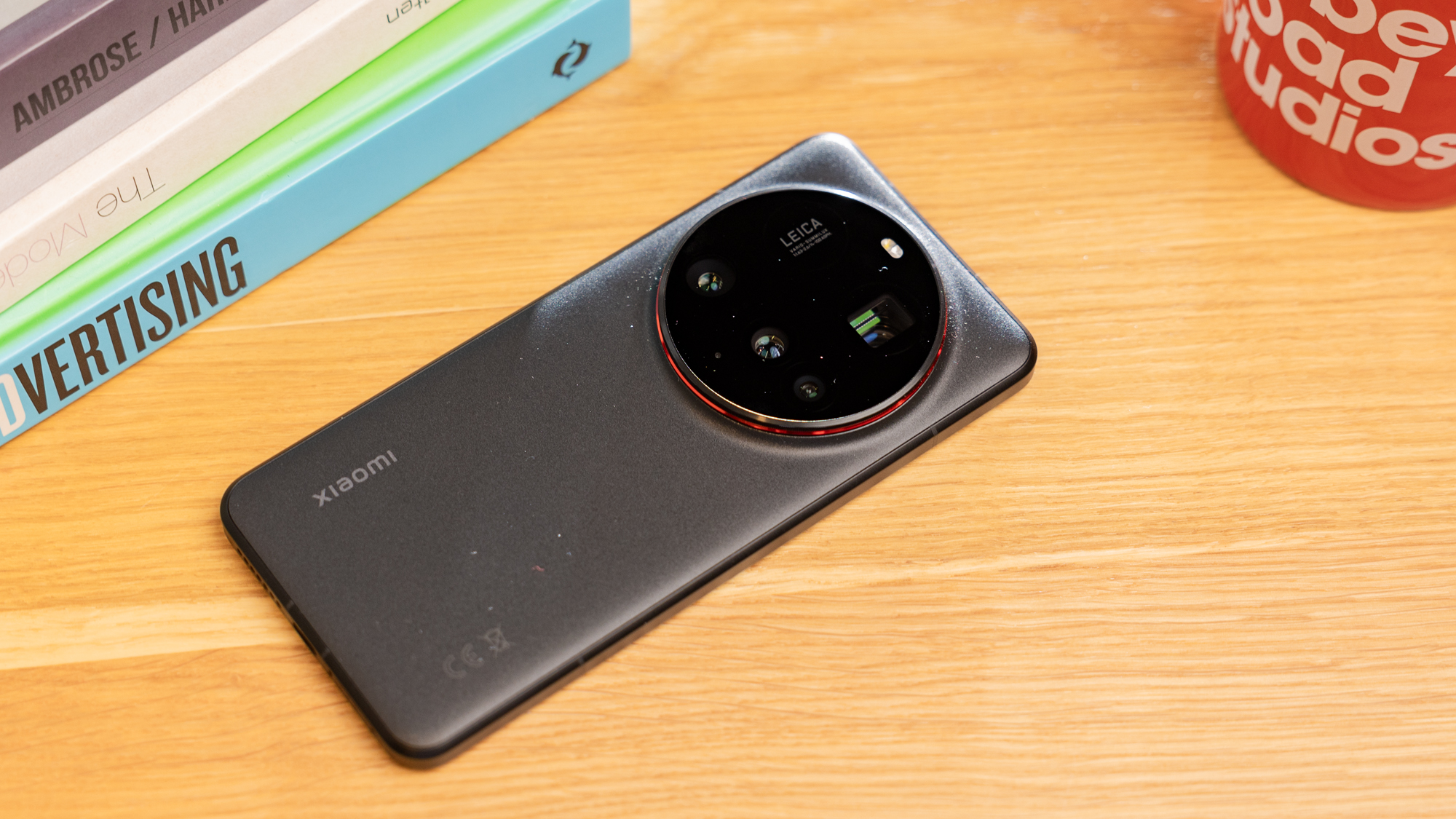
Pros
- Incredible camera performance
- Excellent screen
- Solid battery life & fast charging
- Silky performance
Cons
- Some design backsteps
- Not the best Android skin
- Mixed bag of AI features
- Not available in the US
Price When Reviewed:
$1,250 (Global version)
Best Prices Today:
If photography is your top priority, there’s no better phone than the Xiaomi 15 Ultra right now. When it comes to stills, the handset is in a league of its own.
Alongside a trio of 50Mp lenses (main, ultrawide and 3x telephoto), you also now get a 200Mp periscope with 4.3x optical zoom. That enables some of the best zoom shots you’ll find on any phone, though the loss of variable aperture on the main lens makes it slightly less flexible when the subject is closer.
Still, with the optional Photography Kit accessory, it comes closer to replacing a DSLR than any other handset. A very capable 32Mp selfie camera is the icing on the cake.
However, you won’t be taking photos all the time, so it’s good to know that the Xiaomi 15 Ultra boasts top-tier performance, a gorgeous display and strong battery life (plus 90W fast charging), all with a durable yet chunky design.
Its main drawback is on the software side, where Xiaomi’s HyperOS 2 skin doesn’t feel particularly intuitive, and AI features aren’t always flawless.
Given the high price tag, there are better options out there if you’re happy with photos that are just ‘very good’. But if you want the absolute best photography experience out there, the Xiaomi 15 Ultra is the phone for you.
However, it’s also worth considering the regular Xiaomi 15, which is more compact and affordable.
Who should buy the Xiaomi 15 Ultra?
You want the best camera experience on the market and are prepared to buy the Photography Kit.
Xiaomi 15 Ultra: Further Considerations
Look elsewhere for a better software interface and longer support.
Read our full
Xiaomi 15 Ultra review
4. Oppo Find X8 Pro – Best Alternative Premium Phone
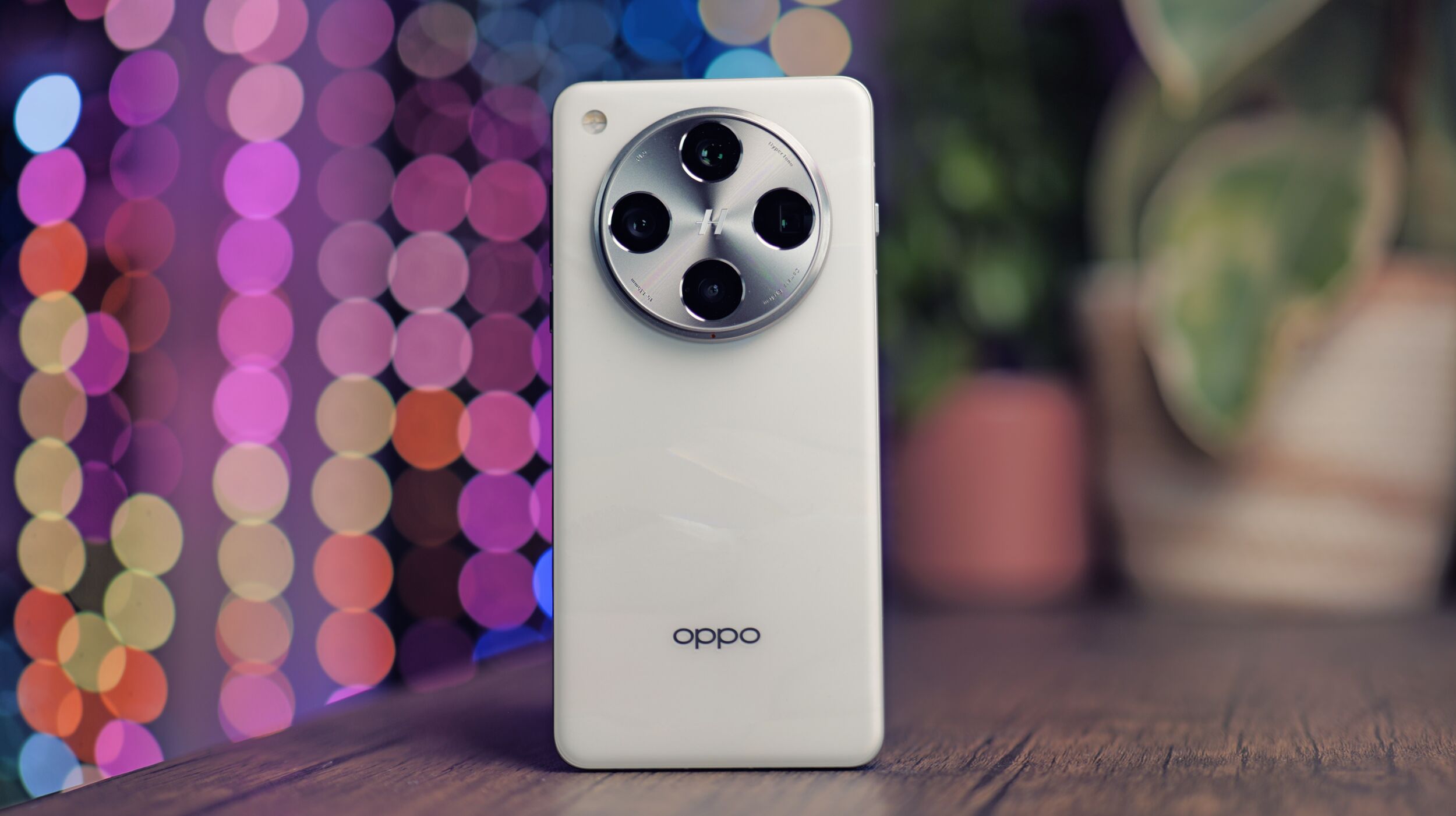
Pros
- Awesome camera system
- Great battery life
- Super powerful
- New camera control button
- Useful AI features
Cons
- Smaller sensors than the Find X7 Ultra
- No autofocus on the selfie camera
- Magnetic charging only works with case
Buy an Oppo Find X8 Pro from O2 with 25GB data for £55.69/month and £30 upfront
After Oppo decided not to release its Find X6 and Find X7 series flagships outside China, the Find X8 series marks a triumphant return to Europe.
Both the Find X8 and Find X8 Pro are excellent phones, but the latter has a slight upper hand. It’s powerful, good-looking, offers amazing battery life and has plenty of software perks.
But it’s the cameras that set it apart from rivals, and turn a great phone into a superb one. For pure image quality, it’s probably only the Xiaomi 14 Ultra that can rival it right now for UK buyers.
The phone isn’t without its compromises – there are a couple of small camera downgrades compared to the Find X7 Ultra, while the software takes some getting used to – but there’s no doubt that the Find X8 Pro is up there with the very best phones you can buy right now.
Who should buy the Oppo Find X8 Pro?
You want a great all-rounder with excellent performance, battery life and cameras with an alternative design to the likes of Samsung and Google.
Oppo Find X8 Pro: Further Considerations
Look elsewhere for a more friendly Android skin and longer software support.
Read our full
Oppo Find X8 Pro review
5. Google Pixel 9 Pro XL – Best Phone Software
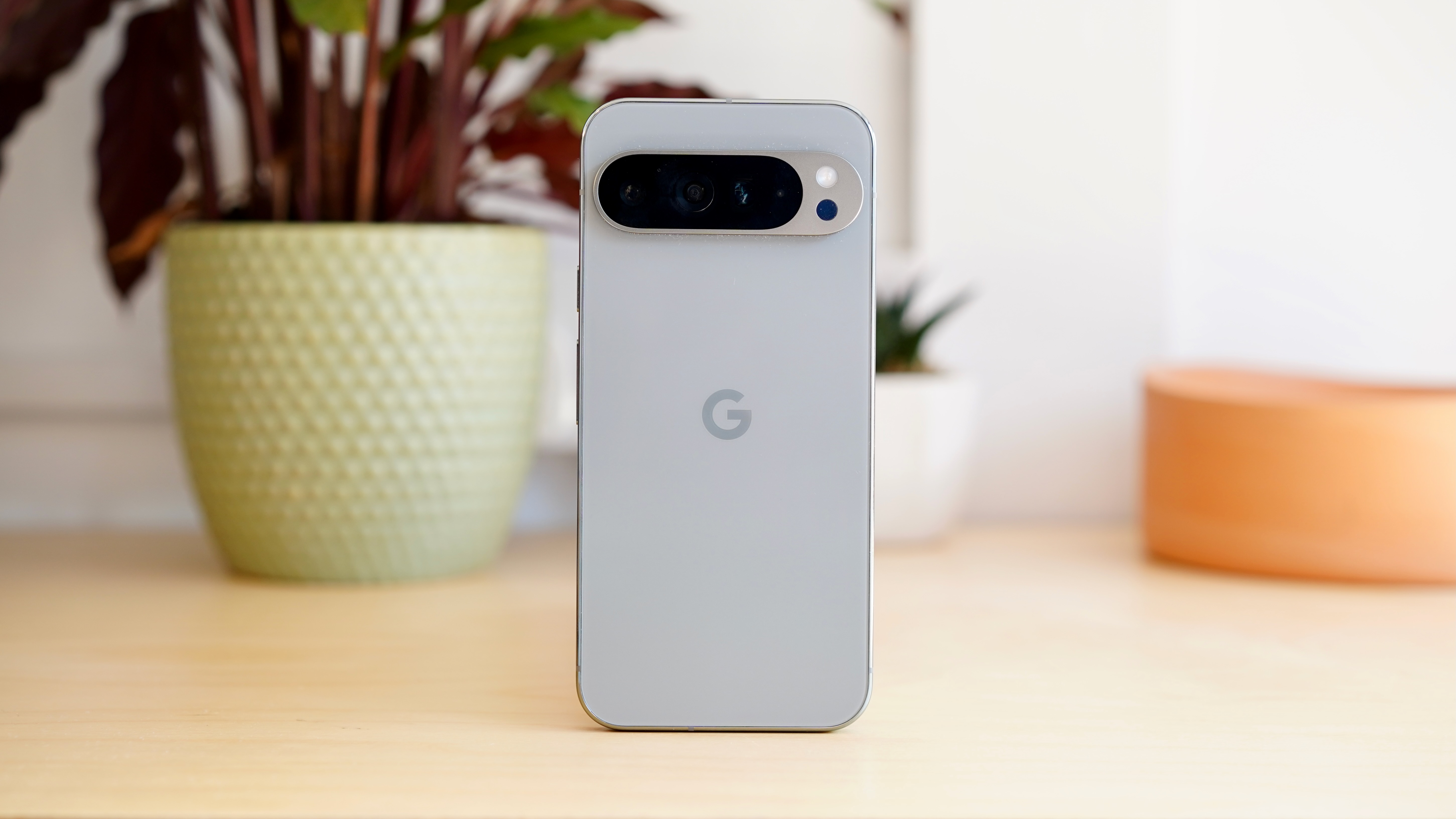
Pros
- Impressive cameras
- Superb display
- Some of the best software around
- Seven years of updates
Cons
- Expensive
- Rather generic design
- Battery life could be better
Price When Reviewed:
From $1,099
Best Prices Today:
If none of the options above appeal to you, a Pixel 9 is probably your best bet. And if you want the absolute best experience, the newly-branded Pixel 9 Pro XL is the one to go for.
While not quite the standout phone we saw with the Pixel 8 Pro, the 9 Pro XL still delivers a compelling experience in almost all key areas.
The cameras are the highlight once again, offering vibrant, high-contrast photos while maintaining key details. That includes low-light conditions, even if the brightening is by no means true to life. A quality ultrawide lens and 5x optical zoom from the telephoto make it an impressively versatile camera system, while selfies from the upgraded front lens are excellent.
Elsewhere, the excellent 6.8-inch display is a joy to use, while Google’s Tensor G4 chipset delivers solid performance. And the build quality is higher than ever, even if the move to a more generic design will disappoint some people.
Google continues to ace the software experience, even if the 9 Pro XL runs Android 14 out of the box and AI features are hit-and-miss. Google’s commitment to seven years of both OS and security updates is yet to be beaten on any phone.
Battery life is decent, rather than a key strength, while 37W charging feels slow. Ultimately, whether you buy the 9 Pro XL depends on whether you think the even higher price tag is worth it.
If not, consider the Pixel 9 Pro or regular Pixel 9 instead, though there are downgrades to be aware of.
Who should buy the Google Pixel 9 Pro XL?
You want the best model from Google’s latest flagship range, getting you a slick experience, class-leading software support and future updates before other brands.
Google Pixel 9 Pro XL: Further Considerations
Look elsewhere for faster charging and better battery life.
Read our full
Google Pixel 9 Pro XL review
6. Apple iPhone 16 Plus – Best iPhone
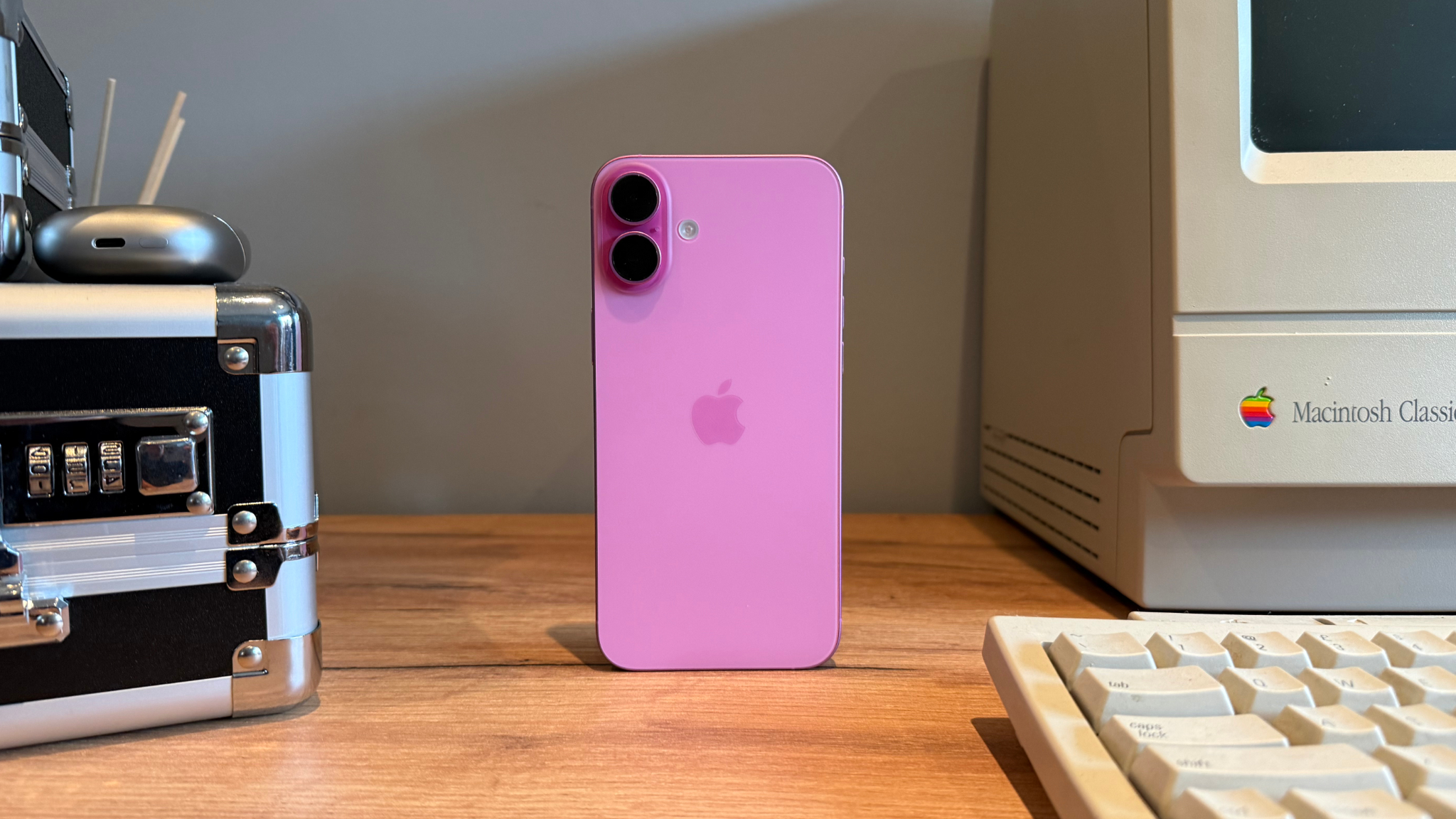
Pros
- Large Super Retina XDR display
- Smooth performance
- Excellent battery life
- Useful Camera Control button
Cons
- No 120Hz refresh rate
- Incomplete AI at launch
- Starts at 128GB storage
Price When Reviewed:
$899
Buy an iPhone 16 Plus from Mozillion with 10GB data for £36.83/month and £0 upfront
From the 2024 line-up, the iPhone 16 Plus is the sweet spot with its combination of size, price and features.
Here, you’re getting a strong all-rounder that’s closer to the Pro Max than usual, considering the Action Button has now trickled down, and the new Camera Control button isn’t exclusive to the Pro models.
And support for Apple Intelligence is a big deal these days, even if the AI features won’t make a big difference to the way you use your phone yet.
The screen isn’t as big or impressive as the Pro Max, and you get a regular A18 chipset instead of A18 Pro, but these will be plenty good enough for most people. You also miss out on a telephoto lens and 1TB storage, but again, a lot of people won’t mind these trade-offs for a more reasonable price.
Unless you’re looking for a more compact model, the 16 Plus strikes a good balance between features and affordability, making it our go-to from Apple’s latest range. However, if you want a more premium experience and are willing to pay more, go for the iPhone 16 Pro Max instead.
Who should buy the Apple iPhone 16 Plus?
You want a big-screen, long battery life iPhone without breaking the bank.
Apple iPhone 16 Plus: Further Considerations
Look to the 16 Pro models or rivals for higher refresh rates, better AI and more storage as standard.
Read our full
Apple iPhone 16 Plus review
7. Google Pixel 9a – Best Mid-Range Phone
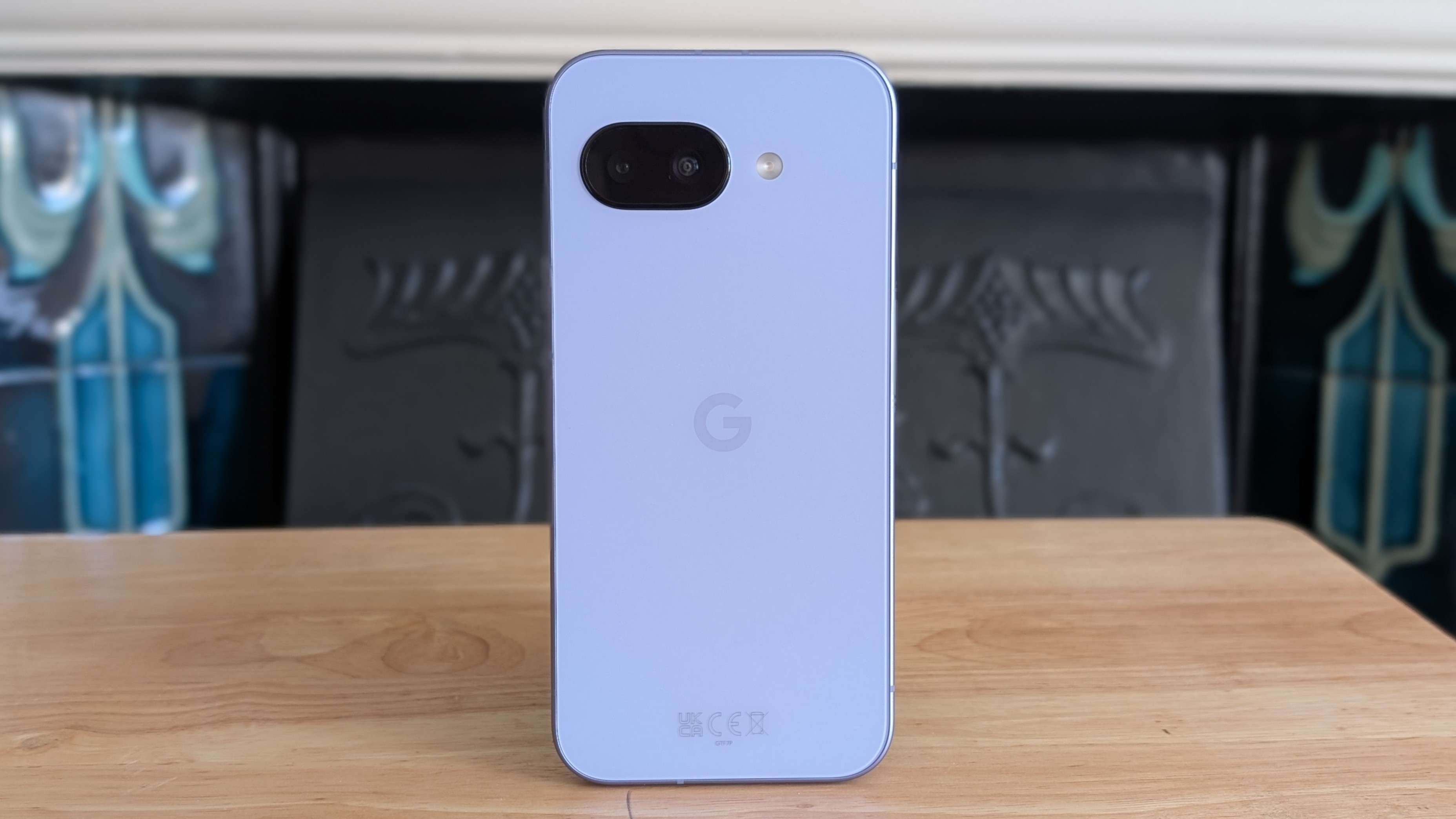
Pros
- Attractive display
- Strong main and selfie cameras
- Excellent software
- Seven years of updates
Cons
- No telephoto camera
- Slow charging
- Polarising design
Price When Reviewed:
From £499
Buy a Google Pixel 9a from Fonehouse on Three with 100GB data for £20/month and £0 upfront
The Pixel 9a might not be the absolute best phone you can buy right now, but it is the easiest to recommend. If you’ve got around £500/$500 to spend and want a solid all-rounder that will last, this is the phone for you.
It’s not like the Pixel 9a doesn’t have any standout features, either. The 6.3-inch P-OLED display is excellent, while the main 48Mp rear camera is one of the very best – including on flagships. You can also expect solid performance and strong battery life from the 5100mAh cell.
But it’s software where the phone really shines. Android 15 is at its best on the Pixel, while even the pared-down AI experience (compared to the flagship Pixel 9 series phones) can still be very useful. Alongside timely updates and seven years of software support, the Pixel 9a is a mid-range phone that’s hard to beat.
The lack of a telephoto lens and slow 23W charging are the big downsides, while some people will be disappointed by the nondescript design, but that doesn’t stop the Pixel 9a from being an excellent choice.
Who should buy the Google Pixel 9a?
You want a latest-generation Pixel phone but at a mid-range price.
Google Pixel 9a: Further Considerations
Look elsewhere for more interesting design and faster charging.
Read our full
Google Pixel 9a review
8. Nothing Phone (3a) – Best Value Phone
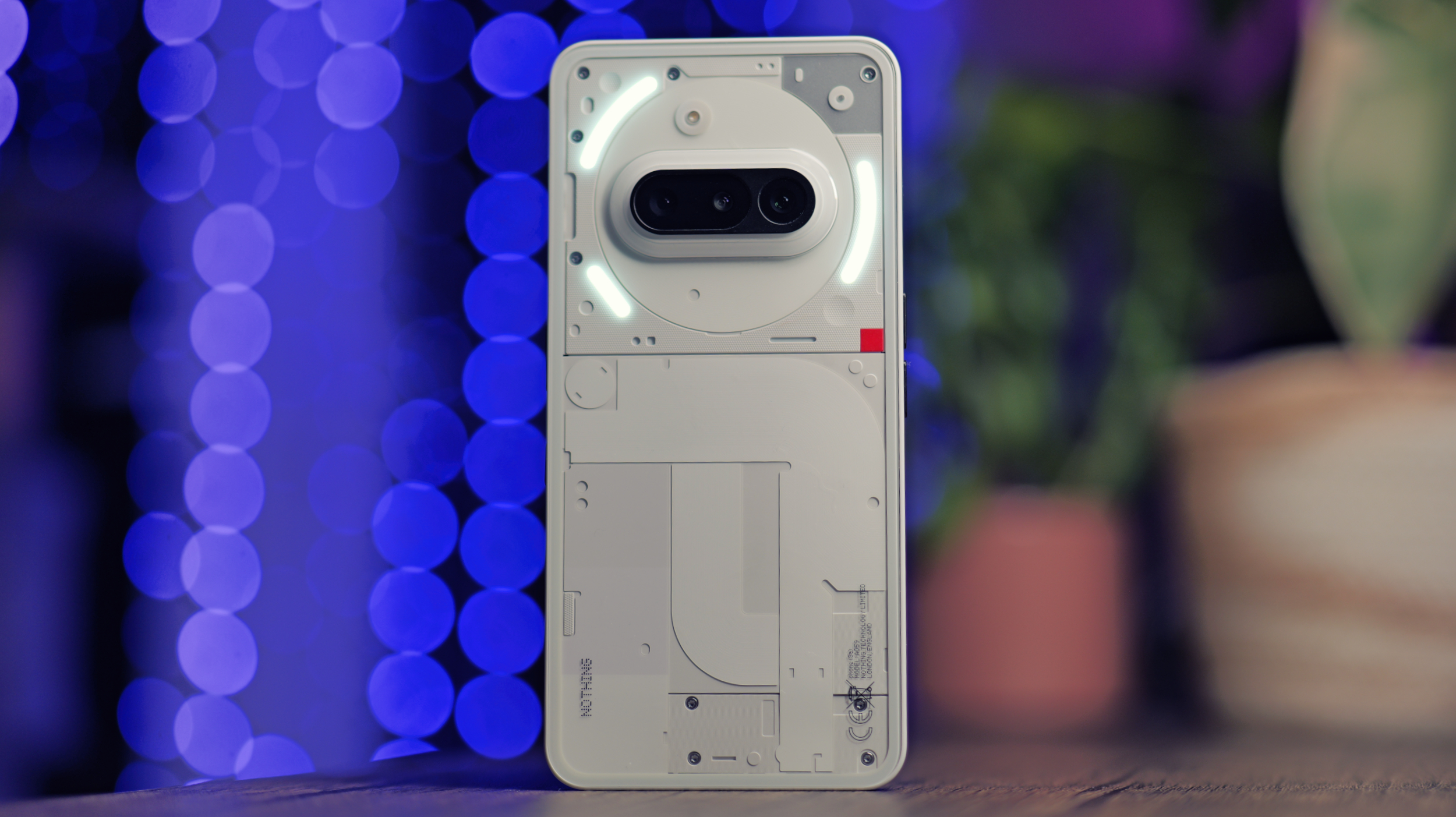
Pros
- Incredibly stylish design
- Affordable price point
- Slick and speedy software
- Great battery life
Cons
- Ultrawide camera isn’t great
- No charger in the box
Buy a Nothing Phone (3a) from EE with 25GB data for £37.36/month and £30 upfront
With a starting price of just £329/$379, the Nothing Phone (3a) is one of the most affordable mid-range phones out there. But for most people, there’s no need to spend more.
The Phone (3a) offers an impressive combination of premium, unique design, rapid performance and great battery life. The display is a slick 120Hz OLED, and Nothing’s take on Android 15 is a compelling one, especially with up to seven years of updates.
The main compromise is the cameras, but the 50Mp main, 50Mp telephoto, and 32Mp selfie lenses still outshine many rivals at this price. The 8Mp ultrawide is the big disappointment, but that won’t be solved by paying more for the (3a) Pro.
Overall, the Phone (3a) is an impressively well-rounded phone at a fraction of the price of flagships. Unless you really care about photography, AI features or the absolute best performance, the phone will serve you well.
Who should buy the Nothing Phone (3a)?
You want a well-specced phone at a very affordable price with a standout design.
Nothing Phone (3a): Further Considerations
Look elsewhere for better cameras and a more subtle style.
Read our full
Nothing Phone (3a) review
9. CMF Phone 2 Pro – Best Budget Phone

Pros
- Impressive cameras
- Excellent display
- Strong performance
- Excellent value for money
Cons
- Only IP54 rated
- Longer software support elsewhere
Price When Reviewed:
$279
Nothing sub-brand CMF’s second phone might adopt the ‘Pro’ name, but it’s still very much a budget phone. And with a starting price of just £219/$279 (more storage in the US), you won’t find a better handset for the money.
What makes the Phone 2 Pro so special? Essentially, it takes everything that made the CMF Phone 1 so good and makes it significantly better, in exchange for only a small price increase.
We’re talking two brand-new camera sensors, with the main lens also getting significantly better. For the price, you can expect some of the best photos around.
Add that to a brighter, more accurate display, a nice performance boost and the all-important NFC that was missing from the original (enabling contactless payments), and the Phone 2 Pro has a lot going for it.
The standout, customisable design remains, as does Nothing’s user-friendly take on Android 15. The three years of OS updates is a little underwhelming, while you don’t get full water or dust resistance, but the CMF Phone 2 Pro undoubtedly has a lot going for it.
Who should buy the CMF Phone 2 Pro?
You want an amazing phone for around four times cheaper than a flagship.
CMF Phone 2 Pro: Further Considerations
Look elsewhere for a more traditional and more durable design.
Read our full
CMF Phone 2 Pro review
10. Motorola Razr 60 Ultra/Razr Ultra 2025 – Best Foldable Phone
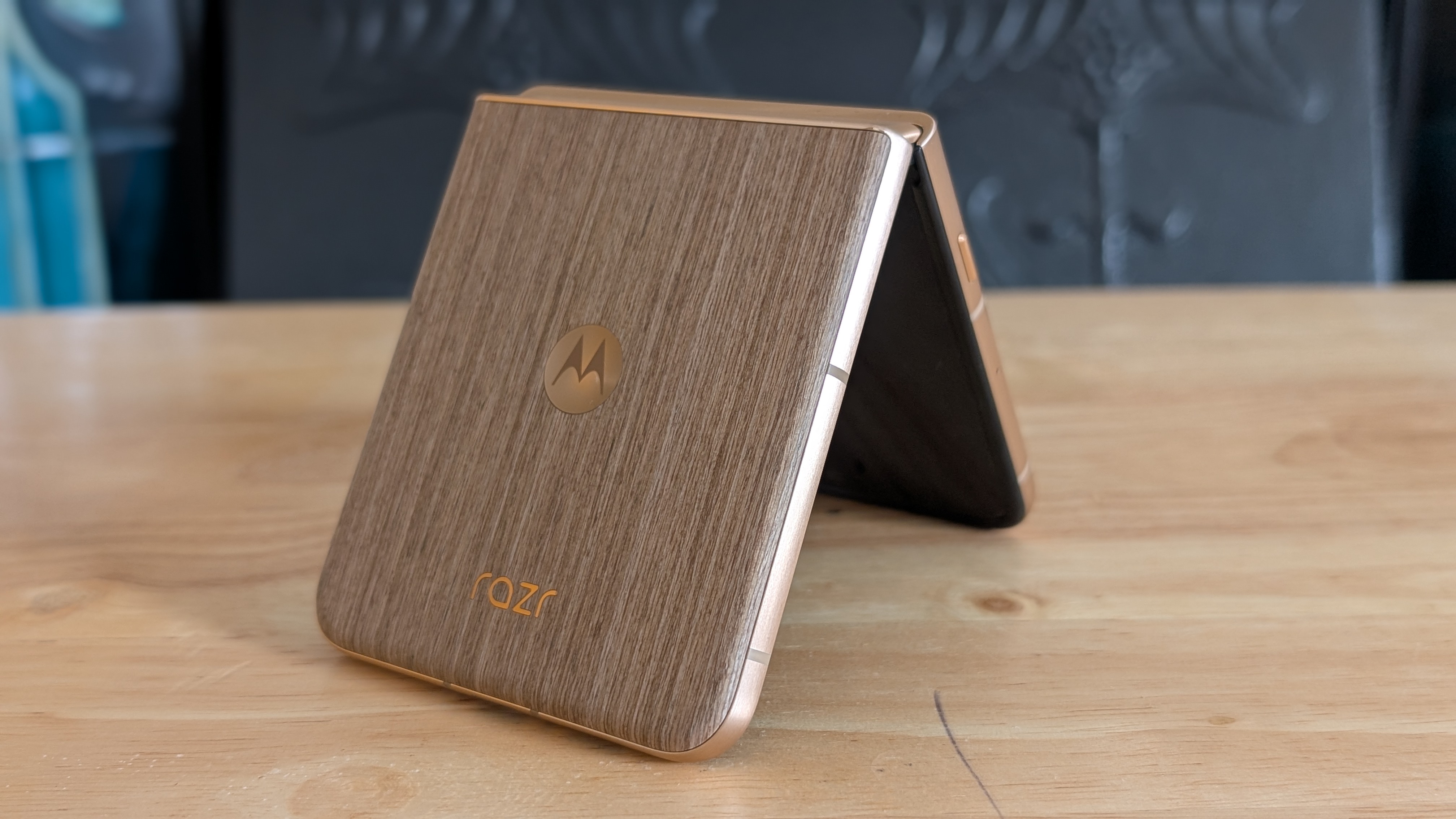
Pros
- Stunning, robust design
- Gorgeous displays
- Top-tier performance
- Excellent battery life
- Useful cover screen
Cons
- No telephoto camera
- Only four years of updates
- Expensive
Price When Reviewed:
From $1,299.99
Best Prices Today:
Buy a Motorola Razr 60 Ultra from iD Mobile with 100GB data for £38.99/month and £9 upfront
The Razr 50 Ultra was already the best folding phone of 2024, but the Razr 60 Ultra extends Motorola’s lead over the competition.
We’re talking stunning new design finishes, including Alcantara and real wood, a tough build and two excellent displays. The 4-inch cover screen is impressively versatile, while the 7-inch internal display has a barely noticeable crease.
Motorola has also equipped the 60 Ultra with Qualcomm’s flagship Snapdragon 8 Elite chip, impressive battery life from the 4700mAh cell and rapid 68W charging.
The lack of a telephoto camera is disappointing at this price point, while just three major OS updates and four years of security patches are well behind the seven years of both offered by the Galaxy Z Flip 6. But if you want the best all-around folding phone on the market, the Razr 60 Ultra is the device for you.
If you’re looking for something more affordable, look out for our review of the regular Razr 50 soon. If a book-style foldable is your preference, go for the Google Pixel 9 Pro Fold.
Who should buy the Motorola Razr 60 Ultra?
You want the best flip phone currently available on the market.
Motorola Razr 60 Ultra: Further Considerations
Look elsewhere for something cheaper and with longer software support.
Read our full Motorola Razr 60 Ultra review
Other phones tested
We’ve reviewed thousands of phones, but whittled down our recommendations here to just 10 of the very best. Naturally that means some truly great phones didn’t make our cut. It also means we’ve had to be selective when looking at phone series with multiple models in the line-up, such as the Pixel 9, iPhone 16 and Galaxy S25 families.
That doesn’t mean we don’t recommend these phones for certain users: check out our individual phone reviews for detailed analysis, or to find out whether a Pro or Plus model might be a better choice for you.
You’ll notice that there are no Honor phones in this list, but the Honor Magic 7 Pro is an attractive phone with lots of great features, including class-leading IP dust and water protection.
Another brand not featured is Huawei, which makes excellent phones such as the P60 Pro. The firm makes top-notch hardware, but the ongoing lack of Google services and apps makes it difficult for us to recommend Huawei phones above the competition here.
Some other noteworthy phones that narrowly missed inclusion in our top-10 list include the Samsung Galaxy A56, Xiaomi 14T and Samsung Galaxy Z Fold 6.
Phone news that could affect your buying decision
With the vast majority of phones typically replaced with a newer model every 12 months, and many contracts today lasting 24-36 months, deciding whether to buy now or wait for the next generation is always a tough decision. Ultimately it is a personal choice, that is going to be affected by what you can afford and when – but it’s good to know you’re not going to almost immediately regret your decision.
As an example, we are recommending the Pixel 9 Pro above. It’s an awesome phone and worth your money today, tomorrow, next week or even next month. But if you’re going to be gutted when Google (probably) announces the Pixel 10 series in August, don’t buy it. Wait for the Pixel 10. If you’d rather pick up a Pixel 9 at a cheaper price, great! Buy away.
We’re still a way off the release of other flagship devices, including the Galaxy S26, iPhone 17, OnePlus 14, and Xiaomi 16, so the current generation of these devices are safe bets for now.
Interesting phones that will be released soon include:
Can I get a better phone deal?
The prices displayed in our list of the best phones are updated daily, making sure you always see the top phone deals. Our recommendations are based on design, performance and typical value, among other things, but with retailer and mobile operator prices changing daily we cannot factor in deals in the same way. Remember that a great deal could make a phone that appears lower down this list more attractive than that which sits at the top.
Good times to find a phone deal include Amazon Prime Day (usually in July and October) and Black Friday in November. Keep an eye on the January sales, too, as well as other sales around specific holidays such as Easter.
Another way to get a great deal is to consider buying a refurbished phone. Not only will you get it cheaper, but it’s also more eco-friendly. We have a regularly updated round-up of the best refurbished phone deals you should check out.
How we test phones
The only way to properly test a phone is to use it as our own. So that’s exactly what we do, putting in our personal SIM and using the handset around the clock for at least a week, and very often longer. This in-depth testing tells us what it’s like to use the phone in the real world, from a user perspective, giving us insight into all features from the camera through to battery life. We pair this hands-on knowledge with traditional benchmarks to ensure we have comparable scores.
Read more about how we test smartphones.
Why you should trust Tech Advisor for phone reviews and buying advice
Smartphones have been a core part of Tech Avisor’s coverage since the first iPhone was released in 2007 and Android made headlines in 2008. Since then, we’ve been guiding you through the fascinating and fast-paced rise of modern mobile phones, including the launch of 5G and the comings and goings of Windows Phone, Blackberry and brands like LG. We are testing new phones on a weekly basis and review just about every model that comes to market. Our expert in-house team and contributors have many decades of combined experience.
Who curated this article?
Our full-time Mobile Editor, Anyron, is the lead on this list of the best phones. He spends almost all his time testing, reviewing and writing about phones and is often among the first in the world to get hold of the latest models. Our Reviews Editor, Chris, who has been testing phones for 15 years, provides assistance.
How to choose the best phone
When choosing a phone, you should consider these things: build quality and design, display, performance, cameras, battery life, software (do you want an Android phone or iPhone?) and value for money.
Generally speaking, a premium phone in 2025 will start at around £700/$700, but can cost over $1,000/£1,000 in some cases.
If you’re buying that phone on a contract, you’re looking at between £30 and £50 per month on average in the UK, but you can spend a lot more if you want an expensive phone and lots of mobile data. In the US, you can often find very good contract deals on phones, typically better than in the UK and Europe.
It’s worth noting that while this list highlights the best smartphones available right now, that doesn’t explicitly mean flagships (even though they do feature heavily here). There are entries that cross over with our mid-range and budget phone round-ups too, but earn their place here based on their extraordinary value.
Buying a phone outright will usually give you the best value, but we appreciate that finances in the real world don’t always accommodate such big one-off purchases. If you can afford to buy the phone outright, you’ll obviously also need to factor in the cost of the plan.
FAQ
Should I buy an iPhone or an Android phone?
There are a few mobile operating systems, but really only two worth talking about: Android and iOS.
More than 70% of phones run Android, with Android 15 being the latest publicly released version (Android 16 is coming soon). Apple’s iOS platform, currently on iOS 18, may have a lower market share, but developers almost always release their apps on iOS first. As a result of this approach, it arguably offers a smoother app experience.
If you have an Android phone or iPhone and want to move to a phone running the other OS (operating system), it’s fairly easy to transfer your contacts and other select data from one to the other.
What you can’t move are paid-for apps and certain app data, so keep this in mind if you’re considering a change of platform – and research any specific concerns you may have about the process.
Should I buy an unlocked phone?
An unlocked phone is one that is not tied to any particular mobile network operator. Buying ‘unlocked’ usually means buying the phone outright without a SIM card or contract attached.
The most important point is that an unlocked phone is almost always a better deal than buying a phone on contract – as long as you can afford it.
The only real exception to this is Apple’s iPhones. Because of their traditional popularity, operators often subsidise the cost of buying an iPhone in order to lock you in to a lucrative long-term deal.
Generally speaking, if you can afford the upfront cost of the handset, you will pay less over the life of your phone by buying unlocked.
More importantly, you are not locked into a lengthy contract. If you want a new handset at any time, you can buy one without having to pay your way out of the contract or commit to another two years.
Just be sure to make certain the phone you’re getting is not locked to a certain network. All phones sold in the UK since December 2021 must be unlocked.
Which SIM or mobile plan should I get?
One other thing to consider is the size and shape of the SIM required for your phone. Make sure you get a nano-SIM if a nano-SIM is what your phone requires.
For the record, every phone in this list takes a nano-SIM, aside from some iPhone models in the US, which use eSIM.
But for most people, it’s best to stick with a physical SIM card for now. Most networks send you a SIM card in three different sizes, so you can just pop out the one you need.
If you’re looking for a SIM-free or unlocked phone, you probably already have a SIM card you’d like to use.
4G connectivity is still fine for most people. But if you want 5G, make sure both the phone and the SIM support it.
What is the best Android phone?
Tech Advisor recommends the Samsung Galaxy S25 Ultra as the best phone available today. It’s a wonderful phone that’s a pleasure to use and there’s no area in which the S25 Ultra falls short. A close second-best is the OnePlus 13.
What is the best iPhone?
Tech Advisor recommends the iPhone 16 Plus as Apple’s top mobile phone. It delivers exceptional performance with its A18 chipset, Camera Control, and brilliant display. It offers almost everything people want from a large-screen iPhone at a much more affordable price than the Pro Max.






































